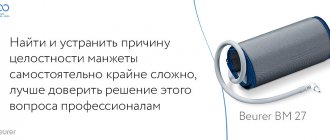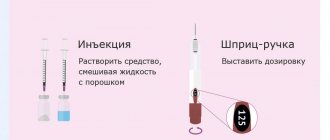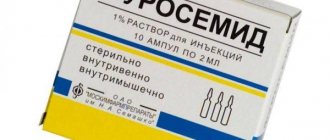This article is from the section “Intravenous injections” from the author Elistratov E.V. (is a practicing surgeon) will help you properly prepare for the procedure and avoid mistakes when administering injections. Let's figure out why intravenous injections are given into a vein, the specifics of manipulation, and the dangers of incorrect administration of the solution.
Reasons for air getting in when injecting into a muscle
During an injection into the muscle, air bubbles enter there along with the solution from the syringe. But how do they get into the syringe? A syringe and a needle are hollow objects, and, one way or another, there is air in them. It is also present in ampoules with medicinal powder or ready-made solution for injection. When preparing the solution and drawing it into the syringe, air bubbles inevitably get inside. Before administering the injection, the healthcare worker is obliged to get rid of most of the air (it’s impossible to remove absolutely all of it anyway - laws of physics). This is done by small manipulations with syringes and releasing a small dose of the drug. Only after this can the patient be given an injection.
The safety rules specify what danger air can pose after entering the vessels and cells of the body. The terrible words “fatal outcome” and “embolism” refer only to injections into venous vessels and the formation of blockages as a result of air entering them. And we are talking about a large air bubble - 200 ml, for children - from 70 ml. It is very difficult to do this by accident, given the volume. And small bubbles have time to dissolve in the blood vessels and will not harm a person in any way.
Through an IV
While people take injections more calmly, the drip causes panic in some people, since the procedure is quite long and the medical worker can leave the patient alone. It is not surprising that the patient experiences anxiety because the solution in the dropper will run out before the doctor removes the needle from the vein.
According to doctors, the patients’ concerns are unfounded, since it is impossible to put air into a vein through a drip. Firstly, before inserting it, the doctor performs all the same manipulations to remove air as with a syringe. Secondly, if the medicine runs out, it will not get into the blood vessel, since the pressure in the dropper is not enough for this, while the blood pressure is quite high and it will not allow it to penetrate the vein.
As for even more complex medical equipment, special filtering devices are installed there, and bubbles are removed automatically.
A dropper is a reliable device for intravenous infusion of medications. Penetration of air into the vein through it is impossible, even if the liquid runs out
Consequences of air entering a muscle when injecting
In the case of air getting in during an intramuscular injection, it is enough to remember that only an air injection into a vein can pose a danger to your life, and then in an amount of 70-200 ml (70-200 “cubes”), and this is a lot. An intramuscular injection with air, most likely, cannot even be distinguished from a correct injection. Air bubbles gradually dissolve in the cells and do not cause deterioration in health. In the worst case scenario, the patient will note at the injection site:
- Soreness;
- Burning;
- Formation of hematoma (bruise);
- Compaction, which can lead to the formation of abscesses and abscesses (here the problem is more in the sterility of the needle than in the air itself);
- If during an injection the needle touches a vessel, then the air can block the flow part and form a slight necrosis.
How to Store Prefilled Syringes
How you store prefilled syringes depends on the type of medicine in them. Most medications are stored at room temperature, but some should be kept in the refrigerator. Your healthcare provider will tell you how to store your syringes. Do not store prefilled syringes in the freezer or leave them in the sun.
Check one of the boxes below so you don't forget how to store your syringes.
- Store prefilled syringes at room temperature.
- Store prefilled syringes in the refrigerator.
If you have questions about storing or carrying prefilled syringes while traveling, contact your healthcare provider.
What to do if the medicine is frozen
If the medicine inside the syringe is frozen, place it near the front of the refrigerator or on a shelf in the refrigerator door to thaw. Do not use the medicine if it has been frozen more than once. Call your healthcare provider for further instructions.
to come back to the beginning
Symptoms of air entering a muscle when injected
If during the injection you did not notice or see air bubbles in the syringe, how can you know if they have entered the soft tissues? If there were few of them, and they managed to all dissolve in the tissue cells, then you would never guess about it. But if something goes “wrong”, the body will notify you:
- The medicine (solution) under the pressure of the air bubble actively comes out from the injection site;
- A hematoma and compaction appears at the injection site, pain when pressed;
- An abscess develops, which becomes an open abscess, or the patient may require the help of a surgeon.
Injection at home
We'll arrive within an hour
Let's give an injection
- intramuscular
- intravenous
- subcutaneous
Prices are cheaper than competitors!
Preparation for the procedure
Let's figure out what is needed to carry out the procedure. The quality of the injection depends not only on knowledge of the intricacies of administering the medicine into a vein, but also on compliance with all conditions for preparing the patient and the workplace.
>Patient preparation
Our DoctorMos specialists initially exclude the possibility of developing an allergy to the drug. If you are hypersensitive to the composition, the injection can be fatal. Additionally, information about the patient’s meal times is clarified (since some drugs can be used on an “empty” or full stomach).
Workplace organization
A properly prepared work area reduces the risk of complications from injections by approximately 50%. Therefore, before starting manipulations, make sure that the location of the procedure meets the requirements:
- the presence of a special table and chair.
- if the injection is “severe”, a couch is needed;
- cushion or pad, objects are placed under the arm;
- a disinfectant for cleaning the hands of a nurse, as well as disinfecting an ampoule with medication;
- sterile container (for a syringe) and non-sterile (for waste materials);
- scissors and a special file for opening an ampoule of medicine;
- disposable syringe of the required volume;
- medicine;
- alcohol-soaked wipes;
- sterile medical gloves;
- medical tourniquet.
Setting up an intravenous injection begins with checking the readiness of the workspace and the expiration date of the medication.
What to do if air gets into a muscle when injecting
Calm, just calm - this advice was given to us by a famous cartoon character and he was absolutely right. A sober outlook and lack of panic is the key to any success. In the case of air getting in during an intramuscular injection, it is enough to remember that only an air injection into a vein, and then in the amount of two hundred cubes, can pose a danger to your life. Such large injections are rarely given, no matter what therapy is prescribed to you, and it is simply unrealistic not to notice such an amount of air in the syringe.
An intramuscular injection with air, most likely, cannot even be distinguished from a correct injection. Air bubbles will gradually dissolve in the cells and will not cause any particular deterioration in health. You should not rub this place vigorously, apply a heating pad or ice to it, or, on the advice of your grandmother, cabbage leaves or burdock leaves from your garden plot.
No special measures or actions need to be taken if air gets into the muscle during an injection. But it would be a good idea to seek medical advice if a hematoma or suppuration (infection) has formed at the injection site and you feel severe pain (nerves are damaged) at the injection site.
Call:
+7 (499) 455-08-05
Calling a nurse to your home
Indications for intravenous injections and injection sites
Intravenous administration of medications is practiced when it is necessary to obtain a quick effect from the drug. Also, injections into a vein are prescribed in cases where the medicinal solution is prohibited for subcutaneous use due to its strong irritant effect.
If an intravenous injection is required, keep in mind that the drugs are injected into veins that are located close to the skin. Our DoctorMos specialists know the specifics of administering an injection for each zone. The most popular IV injection sites include:
| List of zones | Notes |
| Elbow bend | The area is the most popular for manipulation. |
| Forearm | The place is considered the second most popular and is used when the veins in the elbow are difficult to palpate. |
| Back of the hand | The zone is used only in cases where injection is impossible using the first two methods. |
| Temporal zone | The area is more often used to administer drugs into a vein in infants. |
Before the procedure, rule out the presence of phlebitis, muscle atrophy and tissue damage in the vein area. Please note that it is forbidden to administer injections yourself; only a nurse can do them. The price for an intravenous injection is affordable, so you shouldn’t skimp on the services of a specialist.
Preventive measures
One of the consequences of an incorrectly placed injection, even into a muscle, is death. Although, in this case, it is not the air that is to blame, this does not mean that you should not adhere to the rules for giving injections.
Everyone who picks up a syringe must remember: in the case of injections into a vein, an air bubble accidentally entering the vessel provokes an air embolism and the risk of developing a heart attack and stroke. Getting air into a muscle can result in a maximum of inflammation and an abscess, but these two conditions cannot be called pleasant.
To make an intramuscular injection correctly and prevent air bubbles from getting into the soft tissues, you need to follow the instructions:
- Make sure that when the medicine is drawn into the solution syringe, the needle is not in the air gap of the ampoule, and air is not drawn into it during the process;
- It is necessary to draw up the drug slowly, in good lighting;
- Lightly tap the filled syringe with your finger on the walls so that small bubbles rise to the base of the needle;
- Press the piston, allowing air and the first portion (stream) of the medicine mixed with air bubbles to escape through the needle hole.
This way it will be possible to minimize the amount of air in the medicine during intramuscular injections.
How to give an injection?
An intramuscular injection is an effective way to administer a drug to provide a quick therapeutic effect. A specialist with a medical education can choose the right drug and give an intramuscular injection. To ensure that the procedure is painless and safe for the patient’s health, entrust the administration of injections to the professionals of Paramedic Help.
If it is not possible to seek medical assistance in administering an injection, you can try to do it yourself. Read the instructions provided carefully and follow the necessary steps consistently.
Start by preparing your work area. It is important that everything is at hand: syringes, sterile needles, ampoules, disinfectant, paper napkins and cotton wool. Disinfect a large and fairly deep bowl or plate in advance. It is convenient to put all the prepared tools in it.
Can the doctor run tests right away to determine if my baby is infected?
Blood tests taken immediately after the injury will not show whether your child is infected. In order for laboratory test systems to be able to detect a virus in a child’s blood, it is necessary that there is a sufficient amount of virus in the blood, or that the body has produced a lot of antibodies to this virus - only then will we be able to recognize them by analysis. Your doctor can check for infection by doing blood tests at about 6 weeks, and again 3 months or more after the injury. For these tests, it is important to return to your doctor within these times. Examining the syringe itself, especially after your child’s blood has come into contact with it, is futile.
When should you contact your healthcare provider?
Call your healthcare provider if you have the following symptoms:
- Blood does not stop flowing from the injection site.
- You have very severe pain.
- You injected the medicine into the wrong place.
- You have a fever of 100.4°F (38°C) or higher.
- You have signs of an allergic reaction, such as swelling, redness, itching, or a rash.
- You cannot use the syringe because the medicine has expired, the medicine has foamed, changed color, become cloudy, or has crystals in it.
- You cannot use the syringe because you touched something with the needle before injecting.
- You cannot use a pre-filled syringe with Lovenox because there is no air bubble in it.
- You are having difficulty administering the injection.
to come back to the beginning
What infections can be transmitted to a child through a needle stick?
Fast passage
How to prevent hepatitis B? How to prevent hepatitis C? How to prevent HIV?
If the person who previously used this needle has hepatitis B
,
hepatitis C
or
HIV infection
, there is a small chance that a child who pricks himself with the same needle will become infected with it.
However, it should immediately be noted that the risks of contracting these infections in this way are extremely small. The most persistent pathogen in the environment (of these three) is hepatitis B, which also requires a minimum amount of infectious blood for infection - this is why all children in our country are offered (and most are given) a vaccine against hepatitis B in the first six months of life. The vaccine is close to 100% effective even with a transfusion of contaminated blood, especially since it will protect with a tiny injection. Hepatitis C viruses and human immunodeficiency viruses are unstable in the external environment, they usually die quickly when the syringe dries out, and if the syringe looks stale, most likely the infection in it has long since died.
There is also a small chance of contracting tetanus from a syringe lying on the ground. Again, if the child is vaccinated in a timely manner, this risk is finally reduced to zero, but if the vaccinations were not administered in full, you should discuss tactics with your pediatrician.
How to prevent HIV?
Unless your child has had someone else's blood injected from a syringe through a needle, there is little risk of contracting HIV from this injury. However, if a child has factors that increase the risk of infection (see above), the doctor can refer the child to the AIDS Center in your city, where he will be prescribed and given a free preventive course of antiretroviral drugs, the duration of such preventive treatment is usually 1– 3 months.
To make sure your child is not infected, your doctor will discuss with you when your child will need to be tested for HIV. Typically, an ELISA test for HIV antibodies in such a situation is taken twice, after 6 weeks and after 3–12 months.










